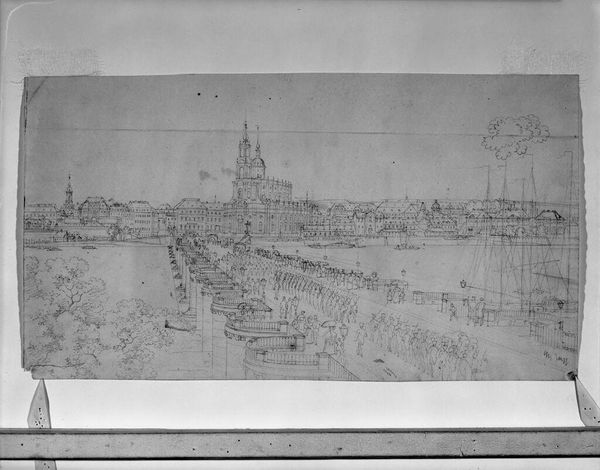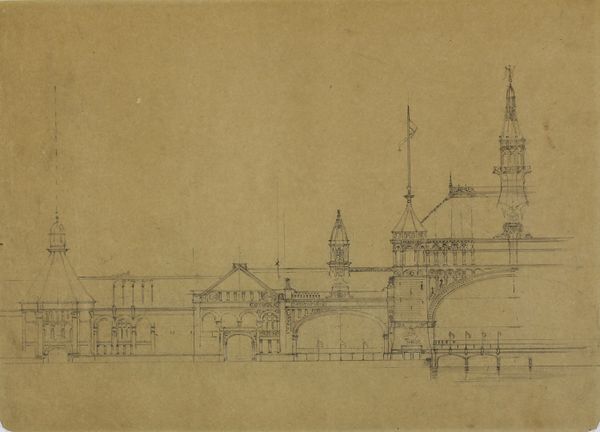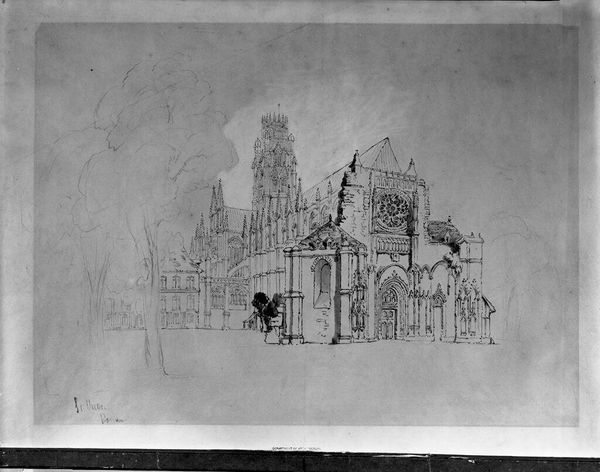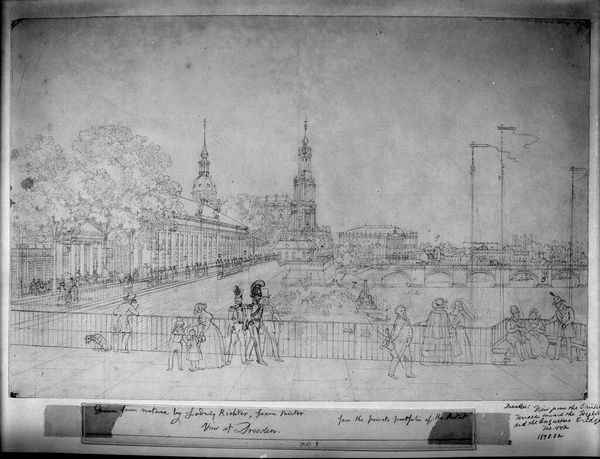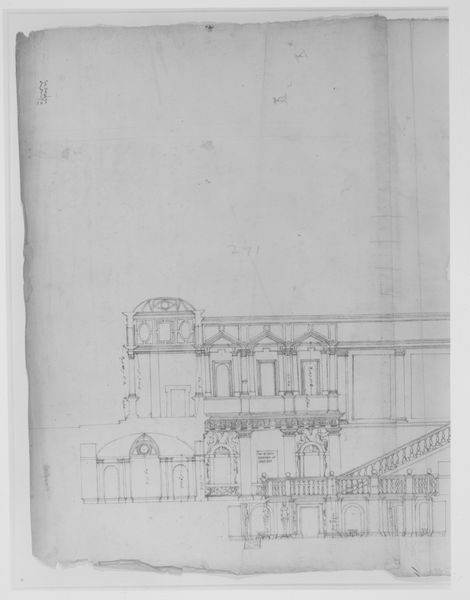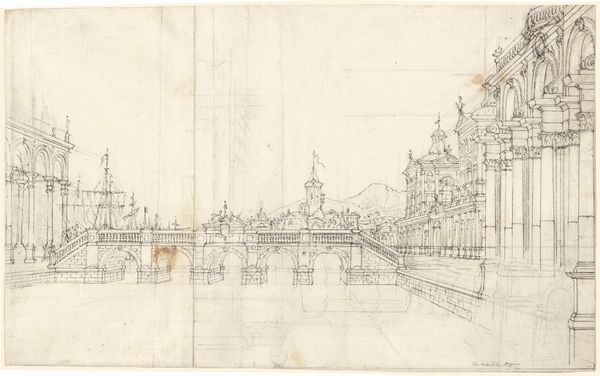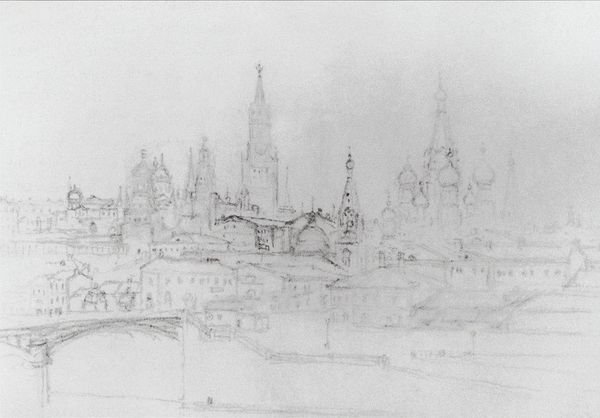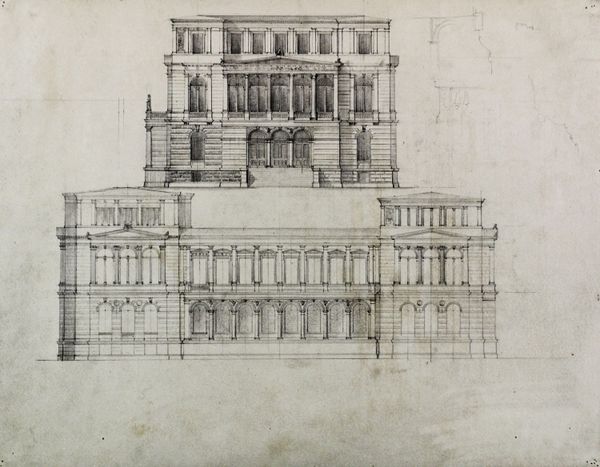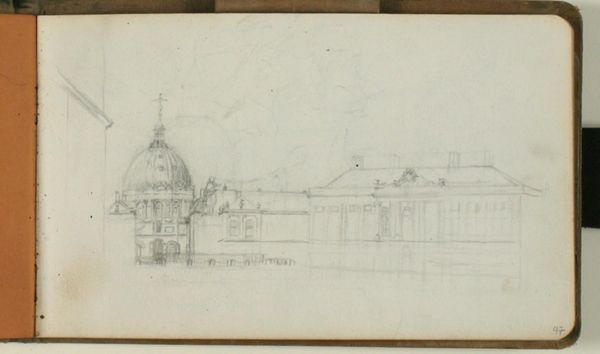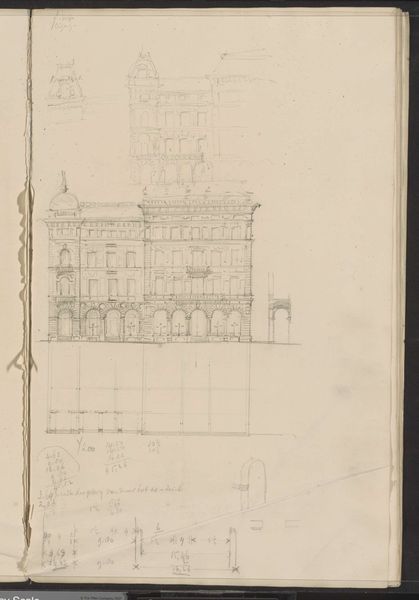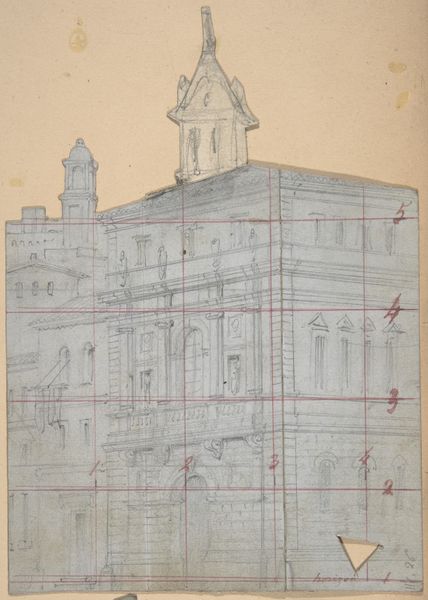
View of the Elbe and the Hofkirche from the Brühl Terrace, Dresden; verso: Dresden c. 1820
0:00
0:00
Dimensions: 30.6 Ã 48.7 cm (12 1/16 Ã 19 3/16 in.)
Copyright: CC0 1.0
Curator: Adrian Ludwig Richter's "View of the Elbe and the Hofkirche from the Brühl Terrace, Dresden," captures a moment in time. The artwork resides at the Harvard Art Museums and measures approximately 30.6 by 48.7 centimeters. Editor: It feels very academic—linear and precise. There’s a formality to the composition with the receding lines of the terrace and the meticulously rendered architecture. Curator: Indeed. Richter likely aimed to convey the orderly and cultivated nature of Dresden's society through this structured composition. The Brühl Terrace was, after all, known as the "Balcony of Europe." Editor: The terrace seems to mediate between the viewer and the scene. The ironwork acts as a kind of structural barrier or lens, separating us from direct engagement. Curator: Precisely. This separation emphasizes the privileged viewpoint of the observer, implicitly positioning the viewer within a specific social stratum. Editor: Considering its composition, it is as if Richter is trying to communicate how constructed the very idea of landscape and place is. Curator: Perhaps. Richter's drawing allows us to examine not only the physical space but also the societal values projected onto it. Editor: I see the piece as a visual essay on social hierarchy and the act of observing itself. Curator: A fitting conclusion. It really makes you think of how perception shapes reality.
Comments
No comments
Be the first to comment and join the conversation on the ultimate creative platform.
